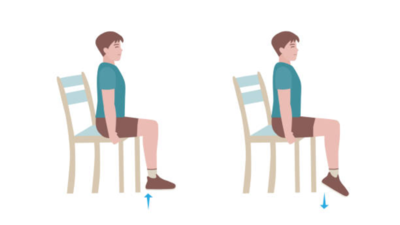
Calf raises are emerging as an effective tool for managing blood sugar, especially for individuals with diabetes. Activating the soleus muscle through simple heel raises helps burn glucose and reduce post-meal blood sugar spikes. This accessible exercise can be done anywhere, even while sitting, offering a convenient way to improve glucose metabolism and circulation.
If you thought managing diabetes meant endless trips to the gym or complicated diets, think again. The latest health tip circulating online surprises many: calf raises. Yes, that simple calf workout, even doable while sitting, is gaining attention as an easy way to help control blood sugar. Here’s why this move is gaining popularity in the fitness realm.
Importance of Calf Raises for Diabetes
At the core of the buzz is the soleus muscle, situated deep in the calf. Unlike other muscles that burn stored sugar, the soleus favors burning glucose, critical for diabetes management. Studies show that calf raises can lower post-meal blood sugar spikes by up to 52%, aiding in diabetes control and preventing complications.
The magic of calf raises lies in lifting your heels while standing or sitting, actively engaging the calf muscles. This ‘soleus push-up’ can be performed anywhere, such as in your office chair or while watching TV. Doing calf raises after meals for about 10 minutes can notably impact blood sugar levels, with additional benefits on circulation.
Sitting Calf Raises: A Gamechanger
This exercise is effective even when seated, countering the risks posed by prolonged sitting associated with elevated diabetes risks. Activating the soleus muscle through calf lifts enhances glucose metabolism, making cells more insulin-sensitive and aiding in regulating blood sugar.
Expert Insights
Certified fitness and nutrition coaches laud calf raises as a simple yet potent tool in diabetes management. When combined with a healthy lifestyle and medical advice, calf raises can be a vital daily practice for improved blood sugar control. University researchers emphasize the sustained metabolic benefits and ease of incorporating calf raises into routines, making it suitable for various demographics.
How to Perform Calf Raises
Follow this simple guide: Sit or stand with flat feet, press on the balls of your feet, lift heels as high as possible, lower down, and repeat for 3-5 minutes, preferably after meals. This exercise requires no special equipment, offering a convenient way to regulate blood sugar levels.
Calf raises are revolutionizing blood sugar control for individuals with diabetes, providing an easy, science-backed solution. Consider incorporating these simple yet effective exercises into your daily routine for improved health outcomes.






